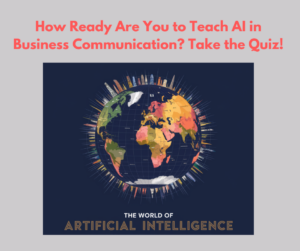
Here’s a 25-question multiple-choice quiz to help you assess your preparedness for teaching AI in your business communication course.
Section 1: Understanding AI in Business Communication
1. What is artificial intelligence (AI) primarily used for in business communication?
a) Replacing human communication
b) Enhancing efficiency, personalization, and automation
c) Eliminating the need for customer service
d) Making all business messages informal
2. Which of the following is NOT a common AI application in business communication?
a) Chatbots for customer service
b) Automated resume screening
c) AI-generated performance evaluations
d) AI replacing CEOs
3. How does AI impact business writing?
a) It reduces the need for grammar and style checking
b) It automates content creation and improves clarity
c) It removes the need for human involvement in writing
d) It makes messages less professional
4. Generative AI tools, such as ChatGPT, can assist with which of the following?
a) Writing business reports
b) Creating marketing messages
c) Analyzing communication trends
d) All of the above
5. One major concern with using AI in communication is:
a) AI can only be used for emails
b) AI may generate misinformation or biased content
c) AI makes human writing unnecessary
d) AI cannot process data
Section 2: Ethical and Responsible AI Use
6. When using AI-generated content, what is a best practice for business communicators?
a) Accept AI-generated content without reviewing it
b) Review and verify AI-generated content for accuracy and bias
c) Use AI to replace all human-written communication
d) Avoid using AI in any business setting
7.AI in business communication can raise ethical concerns, particularly in:
a) Ensuring message transparency and authenticity
b) Reducing communication efficiency
c) Writing informal messages
d) Preventing employees from learning communication skills
8. Which of the following best describes AI bias in communication?
a) AI always provides unbiased results
b) AI-generated content can reflect biases present in its training data
c) AI eliminates the need for diversity in business communication
d) AI automatically ensures inclusivity
9. Which of these AI-related legal concerns should be addressed in business communication?
a) AI's inability to process legal information
b) Copyright and intellectual property issues related to AI-generated content
c) AI’s replacement of human decision-making
d) The requirement that all business communication be written by AI
10. To promote ethical AI use in the classroom, instructors should:
a) Ban students from using AI entirely
b) Encourage students to rely entirely on AI-generated answers
c) Teach students how to critically evaluate AI-generated content
d) Ignore AI’s impact on business communication
Section 3: Teaching AI in Business Communication Courses
11. What should business communication instructors emphasize about AI?
a) AI is a tool, not a replacement for human communication skills
b) AI should handle all writing tasks
c) AI is too complex for business students to use
d) AI makes business communication obsolete
12. Which activity would best help students understand AI’s role in communication?
a) Assigning an AI-generated text without discussing its accuracy
b) Having students compare human and AI-generated business messages
c) Telling students AI does not belong in business communication
d) Ignoring AI and teaching traditional communication only
13. How can AI assist students in learning effective business writing?
a) By analyzing tone and clarity in their writing
b) By automatically completing all their writing assignments
c) By removing the need for students to proofread their work
d) By generating content without human input
14. What is an effective way to incorporate AI into business communication lessons?
a) Show students how to fact-check AI-generated content
b) Ban AI from the classroom entirely
c) Let AI handle all aspects of student writing
d) Tell students AI is irrelevant to business communication
15. When assessing AI-generated business communication, instructors should:
a) Accept AI-generated content without review
b) Evaluate clarity, professionalism, and ethical considerations
c) Grade based on AI’s ability to mimic human writing
d) Discourage students from using AI in assignments
Section 4: Practical AI Applications in Business Communication
16. Which AI tool is commonly used for business communication automation?
a) Microsoft Excel
b) Chatbots and virtual assistants
c) Adobe Photoshop
d) Google Maps
17. What is the primary benefit of AI-powered chatbots in business communication?
a) They completely replace human employees
b) They provide immediate, automated responses to customer inquiries
c) They prevent customers from reaching human agents
d) They eliminate the need for customer service training
18. AI writing assistants help improve business communication by:
a) Eliminating the need for proofreading
b) Providing real-time grammar and clarity suggestions
c) Making every business message sound identical
d) Removing human creativity from business writing
19. AI tools can be particularly useful for:
a) Conducting sentiment analysis of customer feedback
b) Replacing in-person business meetings
c) Ensuring all communication is formal and legalistic
d) Preventing employees from writing messages
20. How can AI improve email communication in business?
a) By crafting concise and effective subject lines
b) By sending emails without human review
c) By making messages longer and more complex
d) By automating all internal communication
Section 5: Challenges and Future of AI in Business Communication
21. A key challenge of AI-generated business communication is:
a) AI messages are always perfect and need no human input
b) AI-generated messages may lack human tone and emotional intelligence
c) AI can think independently like a human
d) AI eliminates the need for business communication skills
22. Which of the following represents a future trend in AI for business communication?
a) AI fully replacing human decision-making
b) AI providing more personalized and interactive communication experiences
c) AI eliminating the need for emails
d) AI reducing the role of communication in business
23. How might AI affect workplace collaboration?
a) AI will entirely replace human teamwork
b) AI will streamline communication by summarizing discussions and suggesting actions
c) AI will create more misunderstandings among employees
d) AI will remove the need for face-to-face communication
24. AI-generated content should always be:
a) Published without review
b) Verified for accuracy and bias before use
c) Considered superior to human-written content
d) Used to replace all human communication
25. In the future, AI’s role in business communication will likely:
a) Enhance personalization and automation while requiring human oversight
b) Eliminate the need for professional writing skills
c) Remove the importance of interpersonal communication
d) Be irrelevant to modern businesses
Answer Key: Am I Prepared to Teach AI in My Business Communication Course?
Section 1: Understanding AI in Business Communication
1. b) Enhancing efficiency, personalization, and automation
2. d) AI replacing CEOs
3. b) It automates content creation and improves clarity
4. d) All of the above
5. b) AI may generate misinformation or biased content
Section 2: Ethical and Responsible AI Use
6. b) Review and verify AI-generated content for accuracy and bias
7. a) Ensuring message transparency and authenticity
8. b) AI-generated content can reflect biases present in its training data
9. b) Copyright and intellectual property issues related to AI-generated content
10. c) Teach students how to critically evaluate AI-generated content
Section 3: Teaching AI in Business Communication Courses
11. a) AI is a tool, not a replacement for human communication skills
12. b) Having students compare human and AI-generated business messages
13. a) By analyzing tone and clarity in their writing
14. a) Show students how to fact-check AI-generated content
15. b) Evaluate clarity, professionalism, and ethical considerations
Section 4: Practical AI Applications in Business Communication
16. b) Chatbots and virtual assistants
17. b) They provide immediate, automated responses to customer inquiries
18. b) Providing real-time grammar and clarity suggestions
19. a) Conducting sentiment analysis of customer feedback
20. a) By crafting concise and effective subject lines
Section 5: Challenges and Future of AI in Business Communication
21. b) AI-generated messages may lack human tone and emotional intelligence
22. b) AI providing more personalized and interactive communication experiences
23. b) AI will streamline communication by summarizing discussions and suggesting actions
24. b) Verified for accuracy and bias before use
25. a) Enhance personalization and automation while requiring human oversight
Note: These 25 test questions were based on the content of Business Communication Today, 16th Edition, by Bovee and Thill (Pearson).
Scoring Guide:
21-25 Correct: You are well-prepared to teach AI in business communication!
16-20 Correct: You have a solid understanding but could refine some concepts by studying Business Communication Today, 16th Edition.
11-15 Correct: You need to strengthen your AI knowledge and teaching strategies by studying Business Communication Today,16th Edition.
10 or Fewer Correct: Consider deepening your understanding before teaching AI in business communication by studying Business Communication Today, 16th Edition.
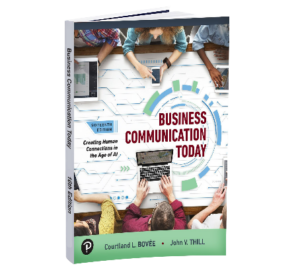
Business Communication Today, 16th Ed.: The First Fully Integrated AI Business Communication Textbook
Business Communication Today, 16th Edition, stands as an exemplary textbook for integrating artificial intelligence (AI) into business communication education. This edition uniquely embeds AI concepts and applications throughout its chapters, ensuring that students grasp both traditional communication principles and modern technological advancements.
One of the book's strengths is its comprehensive coverage of AI's role in contemporary business settings. For instance, it delves into how AI-powered tools like chatbots and virtual assistants are revolutionizing customer service by providing immediate, automated responses, thereby enhancing customer satisfaction. Additionally, the text explores AI's capabilities in data analysis and predictive analytics, highlighting how businesses can anticipate customer needs and tailor their strategies accordingly. This integration ensures that students understand the practical applications of AI in real-world scenarios.
The textbook also addresses the ethical considerations surrounding AI usage in business communication. It emphasizes the importance of transparency and authenticity when deploying AI tools, ensuring that automated interactions maintain the company's voice and values. By discussing potential biases in AI algorithms and the need for ethical oversight, the book prepares students to navigate the complexities of AI implementation responsibly.
Business Communication Today provides practical guidance on leveraging AI for content creation and refinement. It illustrates how AI can assist in drafting messages, analyzing tone, and enhancing clarity, all while maintaining human oversight to ensure the content aligns with organizational standards. This approach equips students with the skills to collaborate effectively with AI tools, enhancing their efficiency and adaptability in the modern workplace.
Incorporating AI into the curriculum through this textbook ensures that future business professionals are well-versed in the technological tools shaping today's communication environment. By blending foundational communication theories with cutting-edge AI applications, Business Communication Today offers a holistic educational experience, making it an ideal resource for teaching AI in a fully integrated manner within business communication courses.
————————————
Prefer contacting your local Pearson Rep to request examination copies? If so, use this Rep Locator.
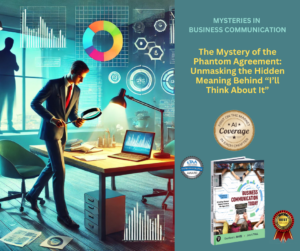


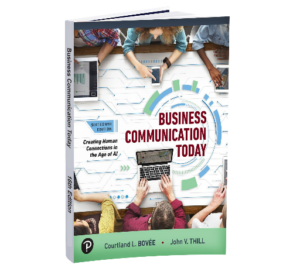
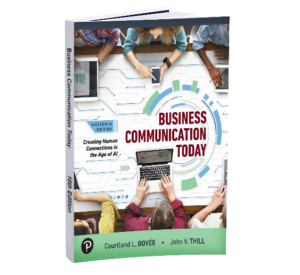

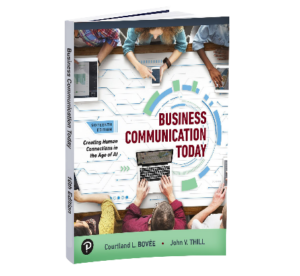

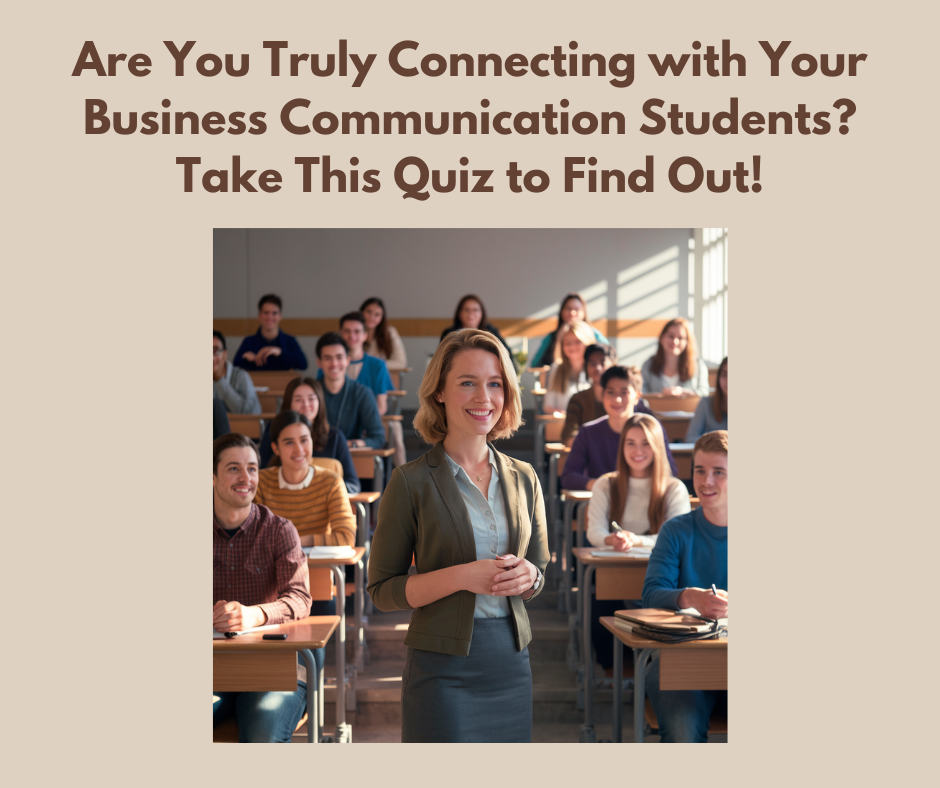

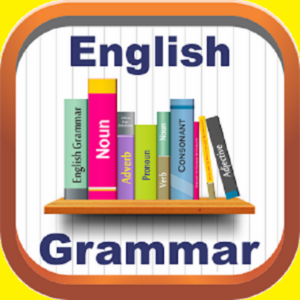 Imagine your students losing out on career opportunities or a six-figure contract simply because of a minor grammar mistake. It happens more often than they might think. In a digital age dominated by informal messaging, some argue that strict grammar adherence is outdated. However, for business communication instructors, the reality is clear: maintaining high grammatical standards remains a non-negotiable skill for professional success.
Imagine your students losing out on career opportunities or a six-figure contract simply because of a minor grammar mistake. It happens more often than they might think. In a digital age dominated by informal messaging, some argue that strict grammar adherence is outdated. However, for business communication instructors, the reality is clear: maintaining high grammatical standards remains a non-negotiable skill for professional success. 